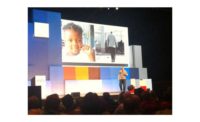Utah Architects Vie for Congressional Seats
 |
| Photo courtesy Stephen Sandstrom (left) / S'ren Simonsen (right) |
| Utah Rep. Stephen Sandstrom (left) and S'ren Simonsen (right). |
Thomas Jefferson may be the most celebrated American architect, albeit an amateur one, to lead a political life, but he certainly wasn’t the last. According to the American Institute of Architects, there are currently about 1,250 AIA members serving in elected and appointed positions, including six mayors, 55 city council members, 135 historic preservation commissioners, and 226 planning commissioners.
But oddly, there are no architects currently serving in the U.S. Congress, and according to the AIA, there was only one during the entire 20th century: Richard Swett, who worked in Skidmore, Owings & Merrill’s San Francisco office before entering politics in the 1990s. A New Hampshire Democrat, he served two terms as a member of the House of Representatives and was later named ambassador to Denmark by President Bill Clinton.
This year, however, two architects are running for Congress, and they both happen to be from Utah. Søren Simonsen, 44, is an architect and city planner from Salt Lake City, where he serves on the city council. He’s running as a Democrat in Utah’s 3rd Congressional District. Republican Stephen Sandstrom, 48, is an architect from Orem who was elected to the Utah House of Representatives in 2006. He recently resigned to run in Utah’s newly created 4th Congressional District. Both face June primary challenges from other candidates.
Sandstrom is principal of Sandstrom Associates Architecture, a 24-person firm that specializes in school design. “I come from a long line of architects,” says Sandstrom, whose great-grandfather began practicing in Utah in the 1930s. The firm is based in Orem, about an hour south of Salt Lake City, but has an office in Denver. Sandstrom calls himself a “Reagan conservative” who favors small government, lower taxes, and tough immigration laws.
Simonsen is a principal of Community Studio, a small Salt Lake City firm specializing in neighborhood-based urban design. He was the first LEED-accredited professional in Utah and is an advocate for sustainable design and community development. In 2009, when he was up for reelection to the city council, Simonsen won the endorsement of the Salt Lake Tribune, which praised his progressive politics, “including clean air (he rides a fuel-efficient scooter around the city), advancing mass transit and its related development, and building the city’s trail system.”
Despite their political differences, both candidates say architects are uniquely suited for policymaking. “We’re trained as problem-solvers,” says Simonsen. “We use creative and innovative science, technology, art, and culture to help solve problems that exist in our built environment. That same problem-solving ability can translate to a wide range of issues.” Sandstrom agrees, adding: “The only way you can pass meaningful legislation is to collaborate. You have to build coalitions. You have to get people to see your point of view. Well, that’s what you do as an architect.”
Does being a working architect resonate with voters? “I don’t know if it will make a big difference with voters,” Simonsen says, “but certainly architecture is a very well respected profession.” Sandstrom says he often talks about his work as an architect, and voters do connect with it. “And not to offend anybody in the law profession,” he says, “but people are really sick and tired of having so many of our lawmakers in D.C. being attorneys.”
For the AIA, having two of its members both running for Congress this year is something of a coup. Since 2006, the organization has encouraged members to become “citizen architects” by serving in elected and appointed political positions. While the AIA doesn’t endorse particular candidates, it does offer support to architects seeking political office by way of conferences, a guidebook, and issue briefs. “More and more architects are recognizing the need to get involved,” says Paul Mendelsohn, the AIA’s vice president for government and community relations. “But for whatever reason, there haven’t been many who have been successful in pursuit of Congress. Having two run in the same year is really exciting.”

